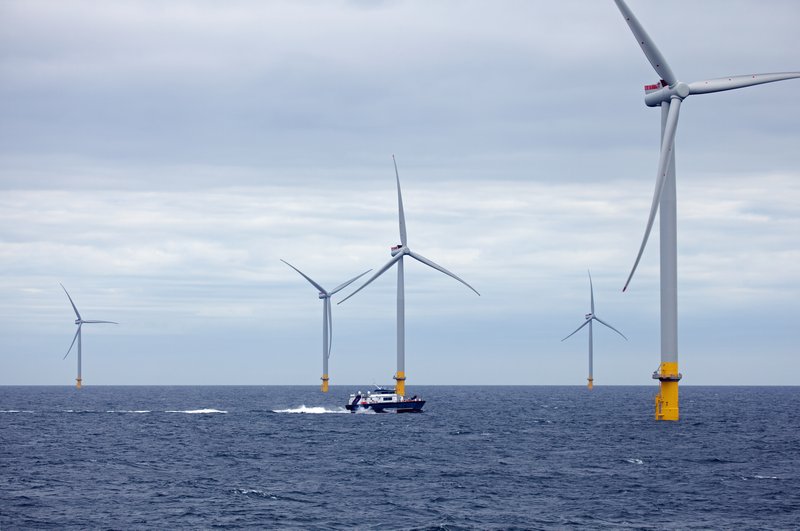Ricoh 3D, the 3D printing subsidiary of Japanese electronics and imaging firm Ricoh, has announced that its Telford-based HQ will be switching to 100 percent renewable energy.
In an agreement with Danish energy provider Ørsted, Ricoh 3D and Ricoh’s other UK-based business operations will shift to energy generated by offshore wind farms. The move comes as part of the company’s broader effort to reduce its CO2 emissions, and reinforces its commitment to the United Nations’ Sustainable Development Goals.
“We have embarked on a journey of reducing our carbon footprint in every possible way,” said Colin Weaver, Managing Director of Ricoh UK Products Limited. “Having a sustainable energy provider is a key part of our efforts, but it is by no means the only thing we are doing as a business to be environmentally responsible.”
“Sustainable manufacturing is so much more than a tick box exercise for us here at Ricoh, it’s in our DNA.”

Ricoh in the 3D printing industry
Headquartered in Tokyo, the broader Ricoh Group operates in around 200 countries and regions globally, generating sales of 2,008 billion yen or $18.5 billion last year. The company’s services include document management solutions, IT and communications services, digital cameras, and commercial and industrial printing systems.
Ricoh’s additive manufacturing arm, Ricoh 3D, leverages the wider firm’s global support network to provide clients with a full range of end-to-end 3D printing solutions. The firm’s Telford facility houses a wide range of machines including FDM, SLS and MJF printers, that produce parts for customers in the automotive, aerospace, industrial and medical sectors.
Since 2018, when the company committed around $1.8 billion to its 3D printing business, Ricoh has sought to broaden its involvement in the future of additive manufacturing. In order to assess the potential of research in additive manufacturing, the firm conducted a study into the educational benefits of the technology in July 2018. The research found that 65 percent of those surveyed believed that 3D printing was becoming more important in STEM-based learning.
A year later, the company developed a presence within the biomedical industry, acquiring a 34.5 percent stake in biotechnology company Elixirgen Scientific. In order to further enhance its medical credentials, Ricoh also achieved ISO 13485 certification, for its quality management protocols in producing medical products. The accreditation enabled Ricoh to produce parts with more critical applications for a wider range of customers.
Following a string of investments in 3D printing, the company has now invested in future-proofing its manufacturing facilities, by signing a deal with Ørsted to make its Telford HQ fully-sustainable.

Ricoh’s eco-friendly additive objectives
Ricoh’s contract with Ørsted will not just see the company shift its 3D printing Telford HQ to renewable energy, but its wider business as well. Ørsted operates a quarter of the world’s total offshore wind generation capacity, making it well-positioned to expand its supply of energy to the Japanese multinational, should it be required.
Additionally, Ørsted runs the world’s largest offshore wind farm on the Yorkshire coast, making it ideally located for supplying Ricoh’s UK operations. Since 2002, Ricoh 3D has committed more than £2 million to over 250 CO2 emission-reduction related activities. The company’s slew of changes over the last two decades, include the introduction of high-efficiency variable-speed compressors.
By recovering waste from compressed air generation, the eco-friendly devices enable Ricoh to heat the buildings at its Telford site for nine months of the year. Ricoh has also introduced an intelligent LED lighting system that features daylight harvesting and uses motion sensors to ensure that lights only remain on when necessary. As a result, the firm has decreased its lighting energy demand by 80 percent since the measures were introduced.
Since 2000, Ricoh’s 3D printing HQ has reduced its CO2 emissions from 10,000 to 5,000 tonnes per year, and the company has continued to seek out new opportunities to reduce its carbon footprint. For instance, in 2017 Ricoh became the first Japanese member of the RE100. The group represents a global initiative of 100 multinational businesses that are united in their commitment to embracing fully-sustainable power in the near future.
Moving forward, Ricoh plans to invest further in making its facilities more energy efficient by switching to more eco-friendly cooling systems, reducing their electricity output by 30 percent. The company has also changed from hydraulic to electric machines at its molding facility, and introduced dynamic control of its fan and pump systems to ensure that they are only in use when needed.
According to Weaver, Ricoh isn’t just satisfied with reducing its energy output, but is actively seeking to generate its own sustainable energy supply. “We have further plans to lower our CO2 emissions, including a major ground and Bluetop carport solar PV system which is due to be installed by Push Energy this year,” concluded Weaver. “This will reduce the site’s CO2 emissions by a further 600 tonnes and will enable us to generate our own green energy.”
Sustainability in additive manufacturing
3D printing has often been marketed as a more efficient form of manufacturing than existing processes, but recently, researchers have come to varying conclusions about its impact on the environment.
The Center for Industrial Ecology (CIE) published a peer-reviewed journal in December 2017 which assessed the broader health and environmental implications of 3D printing. In the paper, its editor Reid Lifset concluded that further research was required into the potential problems associated with greater volume of production.
In September 2018, researchers from MIT, Yale, and the University of Nottingham jointly analyzed the eco-friendly performance of 3D printing. Although the team found that accessibility was generally driving more sustainable production, they concluded that more could be done to reduce material waste in the industry.
Scientists at Grenoble Alpes University evaluated the environmental impact of 3D printing via a case study focused on the production of orthotic insoles. The researchers found that the time saved by moving to additive manufacturing, made it a more efficient form of production than traditional methods.
Nominations for the 2020 3D Printing Industry Awards are still open, let us know who is leading the industry now.
The fourth edition of the 3D Printing Industry Awards Trophy Design Competition is now underway. Enter your design for the chance to win a CraftBot Flow 3D printer.
To stay up to date with the latest 3D printing news, don’t forget to subscribe to the 3D Printing Industry newsletter or follow us on Twitter or liking our page on Facebook.
Are you looking for a job in the additive manufacturing industry? Visit 3D Printing Jobs for a selection of roles in the industry.
Featured image shows an Ørsted offshore wind farm. Image via Ricoh.



